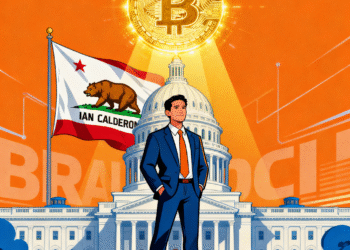In a move that’s already sparking heated discussions across the crypto space, Coinbase has rolled out a 0.1% swap fee on USDC transactions exceeding $5 million, directly impacting the behavior of high-volume traders—also known as USDC whales.
The change, announced by Coinbase this week, marks a shift in how the exchange approaches revenue generation in a tightening market and may signal broader adjustments in how DeFi protocols interact with stablecoin liquidity providers.
Coinbase’s New Policy and the Impact on USDC Whales
According to Coinbase’s updated fee structure, any USDC swap exceeding $5 million will now incur a 0.1% fee. This applies specifically to swaps on Coinbase Advanced and Prime platforms. The move, as explained by CEO Brian Armstrong in a recent statement on X, is part of a larger initiative to make high-volume users contribute more equitably to platform sustainability.
Yep
— Brian Armstrong (@brian_armstrong) August 7, 2025
USDC whales—traders or firms that regularly move large sums of the stablecoin—have historically benefited from low or no-fee structures. With this new policy, a single $10 million USDC swap would now incur a $10,000 fee, which could add up significantly for trading firms executing frequent large-scale transactions.
While average retail users won’t be affected, the policy is seen as a direct response to revenue shortfalls. Coinbase’s Q2 financial results showed underperformance in expected trading volume, leading to a strategic reevaluation of fee mechanisms across its services.
A Strategic Pivot or Just a Temporary Fix?
Industry observers have mixed reactions. Ryan Sean Adams, co-founder of Bankless, noted in his reaction on X that the move could “signal desperation or maturity,” depending on perspective. On one hand, it highlights Coinbase’s need to shore up revenue. On the other, it shows a more Wall Street-like approach to cost-sharing, where large players pay a premium for market infrastructure.
Hmmm…why
— RYAN SΞAN ADAMS – rsa.eth 🦄 (@RyanSAdams) August 6, 2025
I don’t love the precedent here. What if this dropped to $10k. Feels like bank fees again @coinbase.
$1 USD = $1USDC right? pic.twitter.com/l9easdJM2t
Some DeFi analysts argue this may be the beginning of a more segmented fee model, where different users face different pricing structures based on their trading volume or balance sheet. It also comes at a time when regulatory pressures are intensifying, and centralized exchanges are being forced to reexamine their path to profitability.
According reported Coinbase’s official disclosure, this isn’t about punishing big players, but about balancing usage and fairness. Still, some USDC whales may now consider moving significant swap activity to decentralized protocols or off-chain solutions to avoid these costs.
Broader Implications for the Stablecoin Ecosystem
This change also brings Circle’s USDC into the spotlight. As of today, USDC is the second-largest stablecoin by market cap, with over $32 billion in circulation, according to DeFiLlama. While the token itself is not affected, its usage on centralized exchanges might shift depending on how competitors respond.
Binance, for instance, still maintains zero-fee swap promotions for selected pairs, while Kraken has not yet introduced a comparable fee structure for stablecoin swaps. If the Coinbase experiment proves successful in boosting margins without losing institutional clients, other exchanges may follow suit.
This also raises questions around stablecoin-based treasury strategies used by Web3 startups and investment DAOs. With thin margins and high frequency operations, even a 0.1% fee can reduce returns significantly.
Final Thoughts: What This Means for USDC Whales and the Market
This update marks a key moment in the evolution of centralized exchange dynamics. USDC whales, long accustomed to frictionless trading environments, may now need to rethink how and where they execute large swaps.
If other platforms follow Coinbase’s lead, we could see a migration of liquidity toward DEXs and aggregators where swap fees are lower or non-existent. On the flip side, if Coinbase successfully balances revenue growth without major outflows, it might create a blueprint for sustainable CeFi-DeFi coexistence.One thing is clear: as institutional capital continues to shape the crypto markets, fee models are evolving—and USDC whales are squarely in the spotlight.

















